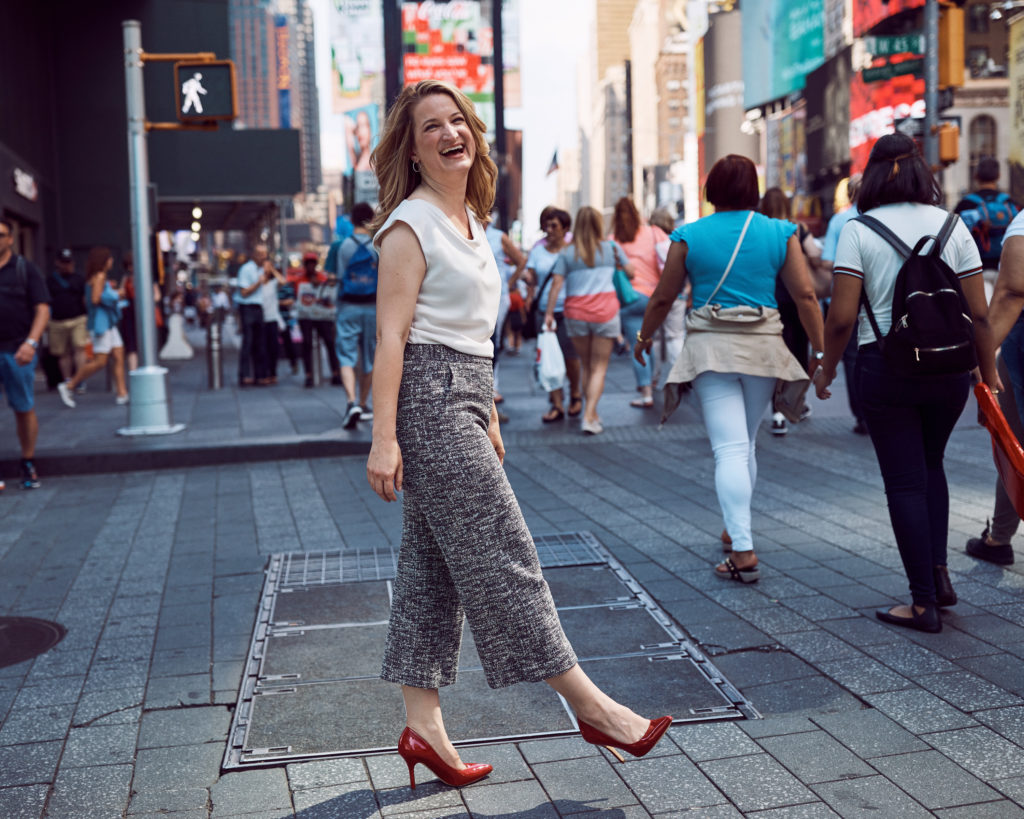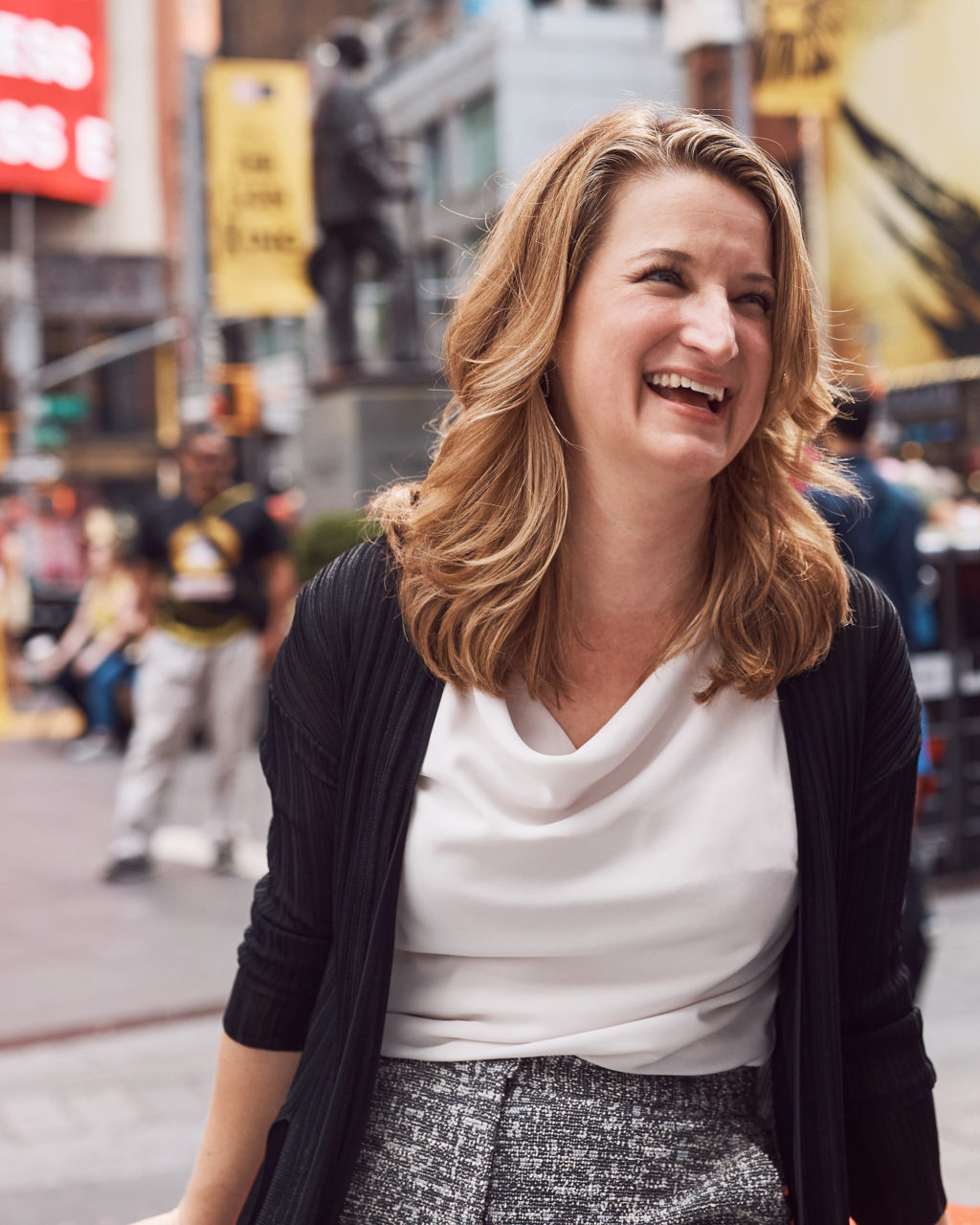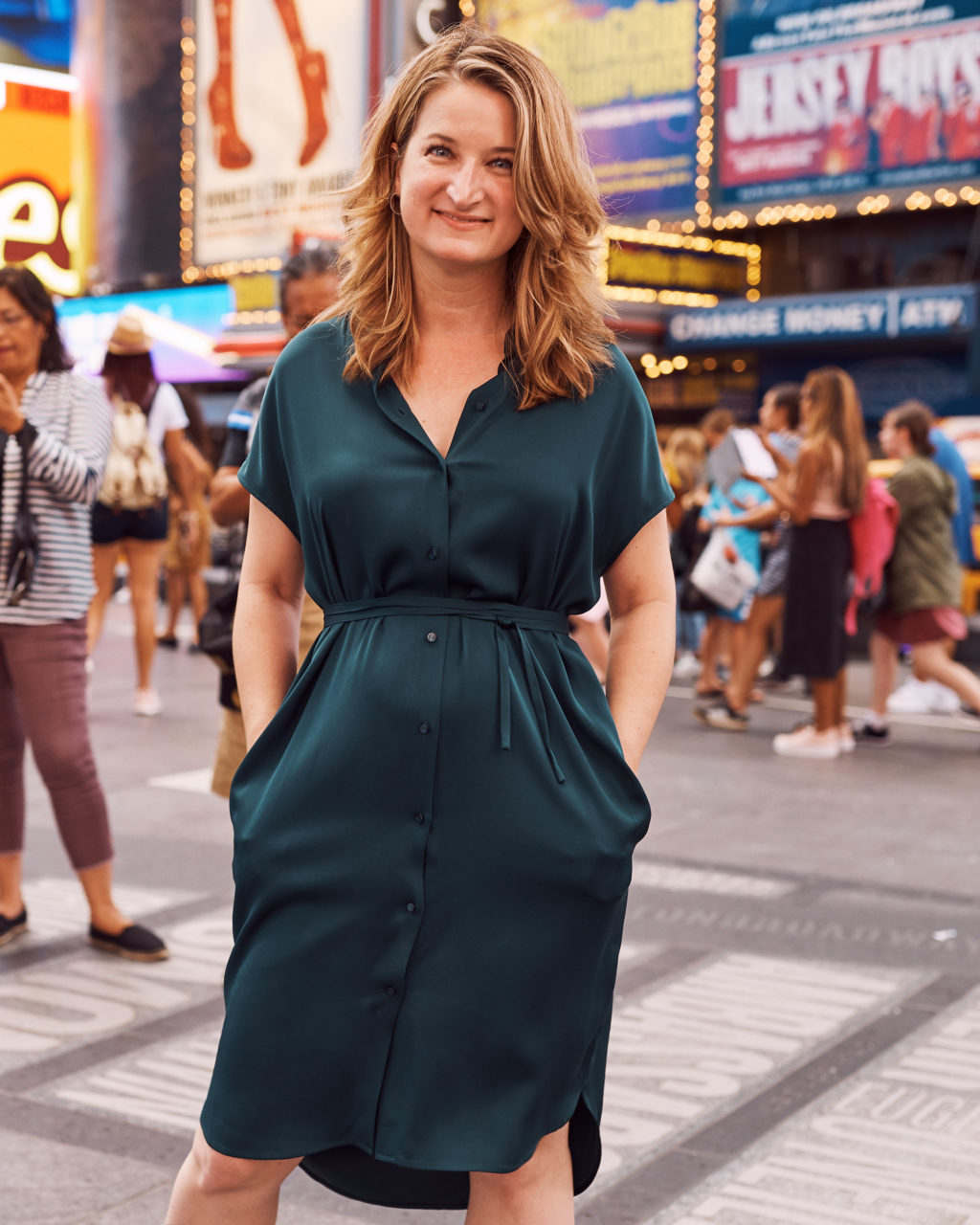What Comes After a “Staring at the Ceiling” Career Turning Point?
August 17, 2018 | Filed in: Woman of the Week
Dr. Amy Waterman thinks about pee quite a bit. More specifically, she thinks about the roughly 100,000 Americans who have trouble urinating because their kidneys are failing, and how to help them. Despite what her title—Amy D. Waterman, PhD, Professor, UCLA Nephrology and Deputy Director of the Terasaki Research Institute—may suggest, Dr. Waterman does not actually transplant kidneys; instead, she focuses on getting more people to donate them (an uphill battle if there ever was one). A psychologist who specializes in decision-making and positive behavior change, she has developed revolutionary education and training programs on kidney donation that have helped save thousands of lives. Here, she discusses rough career transitions, crying at the White House, and how she stays so relentlessly positive.
LIKE A LOT OF PEOPLE, I ALWAYS KNEW I WANTED TO MAKE A DIFFERENCE but I wasn’t exactly sure how. During grad school, I needed a summer job—at the time, I was living off a $10,000 per year stipend—so I worked for a psychologist who was studying whether living kidney donors ever regretted their decision. My job was to call people who had given a kidney to someone—usually a loved one—and ask how they felt about it now. And I asked all these worst-case scenario questions like, “Did you suffer financially or emotionally? Are you still close with the person who has your kidney? Would you do it again?” And all these donors told me amazing stories about how they really got what life was all about after going through the donation process. Others would tell me about watching their mom or dad or sister or child return to health, and how happy they were to have been a part of it. I was just blown away.
TALKING TO THOSE LIVING DONORS GAVE ME A CAUSE. Obviously, one takeaway from the study was that these people didn’t regret donating their kidneys. But many said they had been afraid to ask lots of questions before the procedure, because they were nervous they might not be able to donate. They kept quiet because they didn’t want to jeopardize the opportunity to help their loved ones. It was clear that potential donors needed more information, so I decided to write an educational brochure. From there, we designed an educational program that’s now available online.

Amy wears the Rowling top in birch and the Pippa pant in boucle.
SINCE THEN, MY WORK HAS BEEN FOCUSED on increasing living donations by conducting research studies and professional educational programs, among other approaches. The moment when I first realized that I was really getting somewhere was when I got my first big grant from the government in 2009. They vetted my education design and tested my effectiveness, and determined that it was worth a million-dollar grant. Since then, I’ve won about $22 million in government grants. And in 2016, President Obama invited me to speak at the White House Organ Summit. There’s actually video of me crying at the White House because I was so happy to be there.
WHEN I TELL PEOPLE WHAT I DO FOR A LIVING, people sometimes grab their backs, like they’re protecting their kidneys from me. And I get it, because that’s the common view—“Don’t take my kidney!” Some people don’t even know that you can donate a kidney when you’re alive. Most people just picture some dramatic thing they saw on TV about a person getting their kidney stolen or something. But the reality is, donating a kidney is not that big of a deal, from a medical perspective. If you want to donate, you go to a transplant center, you’re there for one or two days, and you recover and you leave. People worry about what happens if their remaining kidney fails, but the thing is, when kidneys fail, they generally fail together—it’s not like your second kidney is the backup. Also, doctors do a very rigorous screening process so that anyone at risk for kidney failure isn’t allowed to donate in the first place. My job is to educate people about all of this, so that they can weigh the risks and benefits and make their own decisions.

Amy wears the Graham kimono in black, the Rowling top in birch, and the Pippa pant in boucle.
THERE ARE ALMOST 100,000 PEOPLE ON THE WAITING LIST for a kidney right now in the United States alone. Every year, about 5,000 people donate kidneys while they’re alive, and almost 10,000 donate when they die. The thing that gets me fired up about this problem is that it seems so solvable. There are 325 million people in the United States, and out of all of them, I think there are more than 100,000 charitable, healthy donor candidates. I would never want to pressure anyone into doing it, but I do like to invite people to explore the idea and learn about it. What I would really love is for living donation to be something that falls into the same category as many other charitable actions, like giving blood. That would be wonderful.
AS OUR COUNTRY SEEMS INCREASINGLY DIVIDED, I love that everybody’s kidneys are the same color. They’re all just kind of pinkish. There are no white kidneys or black kidneys or Middle Eastern kidneys, and race isn’t a factor in terms of donor and recipient matching. That seems particularly meaningful right now.
BECAUSE I WORK WITH A LOT OF VERY SICK PEOPLE, I have so much gratitude for my life every day, as cheesy as it sounds. Obviously, I have human moments when I hate traffic and get annoyed or upset about something, but they don’t crush me. I can’t be a jerk when I’m constantly surrounded by people who just want a normal life. People with failing kidneys just want to be able to pee like a regular person, you know? Think about being grateful for pee! Or pizza, because you can’t eat tomatoes when you’re on dialysis. It’s eye-opening.
I HAVE PRETTY HUMBLE ROOTS. I grew up in Knoxville, Tennessee, in an immigrant family without a lot of money. I went to non-fancy schools—Indiana University, and then Washington University School of Medicine via scholarship. After I finished my degree, I got a job there, and then I eventually got tenure, which means you are guaranteed a job forever (the dream!). And that’s when I got this offer to come to UCLA to help start the Transplant Research and Education Center. It was completely outside of my known world. I was terrified, but I also knew that it was a huge opportunity. So I gave up tenure and moved away from my family and my friends and took the job.

Amy wears the Aditi dress in galaxy blue.
MY FIRST COUPLE OF YEARS IN L.A. WERE REALLY HARD. When I arrived, I had been promised all this funding, and I was also engaged to be married, so I was picturing the big city, the guy, the money, the job—it was going to be, like, martinis on the roof! Then, some of the funding fell through, which made my laboratory vulnerable, and the engagement didn’t work out. The adjustment from St. Louis to L.A. was also tough. The combination of my Southern and Midwestern upbringing taught me to be really nice, work really hard, and not take a lot of credit for it, and when I came to L.A., it seemed that everyone’s attitude was, “What can we take from you?” I definitely took a beating.
I REMEMBER ONE PARTICULARLY DARK NIGHT OF THE SOUL, staring at the ceiling in my rental apartment—which was more expensive than my three-story home in St. Louis—and thinking, Did I make a terrible mistake? I was worried that I had made this move for my ego, and not for the cause. But I realized that was not actually true, and so I decided two things: One was that I had to stand up for myself at a level that I’d never done before, in the face of people who didn’t believe in me. And second, I had to take care of myself in the most extreme way, because I didn’t have a support network in L.A. like I did in St. Louis. So I created quiet time in my schedule, and I started getting regular massages. I got a simple, light-filled, two-bedroom apartment and two cats, and I made it my sanctuary. I created boundaries: I look more at people’s actions than I listen to their words. It’s not that I don’t trust people, but I don’t trust words alone anymore.
IT TOOK ME A COUPLE OF YEARS, BUT I DID FIND MY FOOTING HERE. I learned to be alone in a big city, grieved the end of a relationship, and made new friends. Then my employer back in St. Louis called and told me, “We miss you—just come back. We’ll give you tenure again, plus more money, and you can be near your parents.” That was an amazing offer, and I figured I should just take it. I’d go back a little wounded but having learned a ton. So I went to my boss at UCLA and told her I had been offered another job, and he asked if UCLA could counter-offer. I thought, There’s no way. There have been financial challenges for me the whole way through. But then they told me, “We’ve been watching you handle difficult circumstances with grace these past few years, and we want to stand up for you.” And they found a way to get me all the funding that I had needed to begin with, plus more. It was incredible. I remember standing on a street corner, looking at all the cars whizzing by, that terrible L.A. traffic, and I realized that UCLA had gotten behind me 100 percent—maybe even 150 percent. And during those years when I hadn’t had enough support, I had cultivated something even more important: resilience.

Amy wears the Nikita dress in rainforest.
AS I GET OLDER, I SEE THAT IF YOU HAVE SOMETHING TO CHAMPION, it gives your life so much meaning. If you don’t have that, life can easily become getting up and eating something and buying a shirt and watching Netflix. It’s not that I don’t do those things and enjoy them, but they are not profoundly joyous for me like my work is. To be engaged in my professional life that way is such a privilege. Sometimes I can’t believe I get paid for it.
FOR FUN, I MAKE ART AND I WRITE, and I travel and take pictures. I play with my cats, I shop for cool things, and I have great girlfriends and we go to restaurants and try all kinds of different foods together. I just got back from Spain, where I discovered that there are so many more types of olives than I ever knew. I thought I was pretty cultured now, living in L.A. and traveling a lot, and then I go to Madrid and I’m blown away that they give you olives at every table like they’re peanuts. The world is so vast.
Photographs by Jeff Allen





